Frequent persons on Sweden's street signs
countries
40 names / 296 streets
Mother Svea
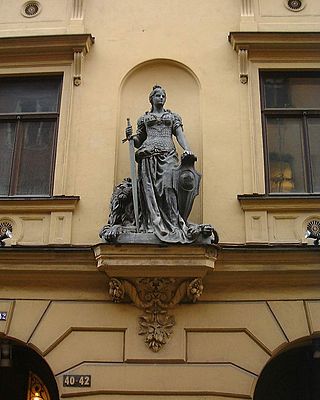 34
Mother Svea or Mother Swea is the female personification of Sweden and a patriotic emblem of the Swedish nation.
34
Mother Svea or Mother Swea is the female personification of Sweden and a patriotic emblem of the Swedish nation.
Thor
 24
Thor is a prominent god in Germanic paganism. In Norse mythology, he is a hammer-wielding god associated with lightning, thunder, storms, sacred groves and trees, strength, the protection of...
24
Thor is a prominent god in Germanic paganism. In Norse mythology, he is a hammer-wielding god associated with lightning, thunder, storms, sacred groves and trees, strength, the protection of...
Baldr
 24
Baldr is a god in Germanic mythology. In Norse mythology, he is a son of the god Odin and the goddess Frigg, and has numerous brothers, such as Thor and Váli. In wider Germanic mythology, the god was...
24
Baldr is a god in Germanic mythology. In Norse mythology, he is a son of the god Odin and the goddess Frigg, and has numerous brothers, such as Thor and Váli. In wider Germanic mythology, the god was...
Carl Linnaeus
 22
Carl Linnaeus, also known after ennoblement in 1761 as Carl von Linné, was a Swedish biologist and physician who formalised binomial nomenclature, the modern system of naming organisms. He is known...
22
Carl Linnaeus, also known after ennoblement in 1761 as Carl von Linné, was a Swedish biologist and physician who formalised binomial nomenclature, the modern system of naming organisms. He is known...
Engelbrekt Engelbrektsson
 20
Engelbrekt Engelbrektsson was a Swedish nobleman, rebel leader and military leader of German ancestry. He was the leader of the Engelbrekt rebellion in 1434 against Eric of Pomerania, king of the...
20
Engelbrekt Engelbrektsson was a Swedish nobleman, rebel leader and military leader of German ancestry. He was the leader of the Engelbrekt rebellion in 1434 against Eric of Pomerania, king of the...
Freyja
 20
In Norse mythology, Freyja is a goddess associated with love, beauty, fertility, sex, war, gold, and seiðr. Freyja is the owner of the necklace Brísingamen, rides a chariot pulled by two cats, is...
20
In Norse mythology, Freyja is a goddess associated with love, beauty, fertility, sex, war, gold, and seiðr. Freyja is the owner of the necklace Brísingamen, rides a chariot pulled by two cats, is...
Esaias Tegnér
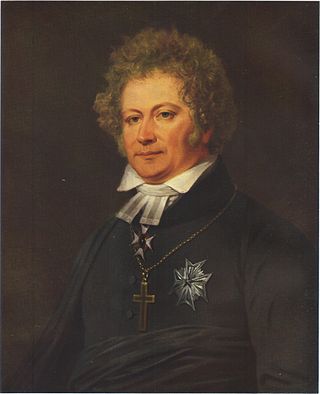 11
Esaias Tegnér was a Swedish writer, professor of the Greek language, and bishop. He was during the 19th century regarded as the father of modern poetry in Sweden, mainly through the national romantic...
11
Esaias Tegnér was a Swedish writer, professor of the Greek language, and bishop. He was during the 19th century regarded as the father of modern poetry in Sweden, mainly through the national romantic...
Christopher Polhem
 9
Christopher Polhammar better known as Christopher Polhem, which he took after his ennoblement in 1716, was a Swedish scientist, inventor and industrialist. He made significant contributions to the...
9
Christopher Polhammar better known as Christopher Polhem, which he took after his ennoblement in 1716, was a Swedish scientist, inventor and industrialist. He made significant contributions to the...
Erik Dahlbergh
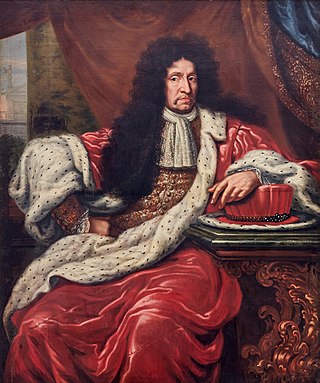 9
Count Erik Jönsson Dahlbergh was a Swedish military engineer, Governor-general and Field marshal. He rose to the level of nobility through his military competence. According to Cathal Nolan, Count...
9
Count Erik Jönsson Dahlbergh was a Swedish military engineer, Governor-general and Field marshal. He rose to the level of nobility through his military competence. According to Cathal Nolan, Count...
Carl Michael Bellman
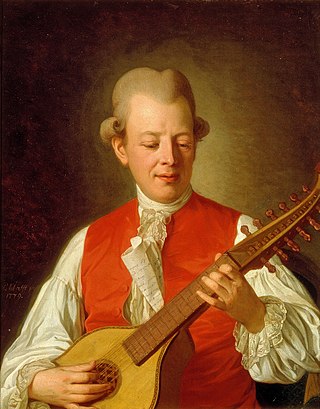 7
Carl Michael Bellman was a Swedish songwriter, composer, musician, poet, and entertainer. He is a central figure in the Swedish song tradition and remains a powerful influence in Swedish music, as...
7
Carl Michael Bellman was a Swedish songwriter, composer, musician, poet, and entertainer. He is a central figure in the Swedish song tradition and remains a powerful influence in Swedish music, as...
Gustavus Adolphus
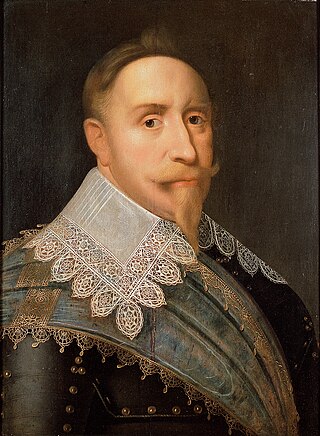 7
Gustavus Adolphus, also known in English as Gustav II Adolf or Gustav II Adolph, was King of Sweden from 1611 to 1632, and is credited with the rise of Sweden as a great European power. During his...
7
Gustavus Adolphus, also known in English as Gustav II Adolf or Gustav II Adolph, was King of Sweden from 1611 to 1632, and is credited with the rise of Sweden as a great European power. During his...
Charles XIV John
 6
Charles XIV John was King of Sweden and Norway from 1818 until his death in 1844 and the first monarch of the Bernadotte dynasty. In Norway, he is known as Charles III John and before he became...
6
Charles XIV John was King of Sweden and Norway from 1818 until his death in 1844 and the first monarch of the Bernadotte dynasty. In Norway, he is known as Charles III John and before he became...
Ulricehamn
 6
Ulricehamn is a locality and the seat of Ulricehamn Municipality, Västra Götaland County, Sweden, with 9,787 inhabitants in 2010.
6
Ulricehamn is a locality and the seat of Ulricehamn Municipality, Västra Götaland County, Sweden, with 9,787 inhabitants in 2010.
Saint Peter
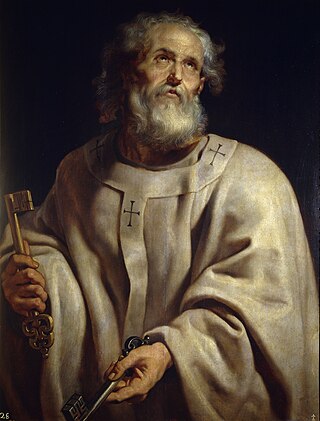 5
Saint Peter, also known as Peter the Apostle, Simon Peter, Simeon, Simon, or Cephas, was one of the Twelve Apostles of Jesus Christ and one of the first leaders of the early Christian Church. He...
5
Saint Peter, also known as Peter the Apostle, Simon Peter, Simeon, Simon, or Cephas, was one of the Twelve Apostles of Jesus Christ and one of the first leaders of the early Christian Church. He...
Christina, Queen of Sweden
 5
Christina was a member of the House of Vasa, and the Queen of Sweden in her own right from 1632 until her abdication in 1654. She succeeded her father Gustavus Adolphus upon his death at the Battle...
5
Christina was a member of the House of Vasa, and the Queen of Sweden in her own right from 1632 until her abdication in 1654. She succeeded her father Gustavus Adolphus upon his death at the Battle...
Saint George
 5
Saint George, also George of Lydda, was an early Christian martyr who is venerated as a saint in Christianity. According to tradition, he was a soldier in the Roman army. Of Cappadocian Greek origin,...
5
Saint George, also George of Lydda, was an early Christian martyr who is venerated as a saint in Christianity. According to tradition, he was a soldier in the Roman army. Of Cappadocian Greek origin,...
Dag Hammarskjöld
 5
Dag Hjalmar Agne Carl Hammarskjöld was a Swedish economist and diplomat who served as the second Secretary-General of the United Nations from April 1953 until his death in a plane crash in September...
5
Dag Hjalmar Agne Carl Hammarskjöld was a Swedish economist and diplomat who served as the second Secretary-General of the United Nations from April 1953 until his death in a plane crash in September...
Olaf II of Norway
 4
Olaf II Haraldsson, also Olav Haraldsson, later known as Saint Olaf and Olaf the Holy, was King of Norway from 1015 to 1028. Son of Harald Grenske, a petty king in Vestfold, Norway, he was...
4
Olaf II Haraldsson, also Olav Haraldsson, later known as Saint Olaf and Olaf the Holy, was King of Norway from 1015 to 1028. Son of Harald Grenske, a petty king in Vestfold, Norway, he was...
Saint Lawrence
 4
Saint Lawrence or Laurence was one of the seven deacons of the city of Rome under Pope Sixtus II who were martyred in the persecution of the Christians that the Roman Emperor Valerian ordered in 258.
4
Saint Lawrence or Laurence was one of the seven deacons of the city of Rome under Pope Sixtus II who were martyred in the persecution of the Christians that the Roman Emperor Valerian ordered in 258.
Erik Johan Stagnelius
 4
Erik Johan Stagnelius was a Swedish Romantic poet, playwright and romantic critic of political economy.
4
Erik Johan Stagnelius was a Swedish Romantic poet, playwright and romantic critic of political economy.
Selma Lagerlöf
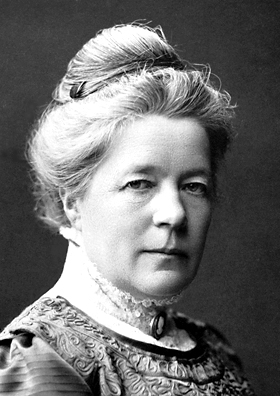 4
Selma Ottilia Lovisa Lagerlöf was a Swedish writer. She published her first novel, Gösta Berling's Saga, at the age of 33. She was the first woman to win the Nobel Prize in Literature, which she was...
4
Selma Ottilia Lovisa Lagerlöf was a Swedish writer. She published her first novel, Gösta Berling's Saga, at the age of 33. She was the first woman to win the Nobel Prize in Literature, which she was...
Anders Celsius
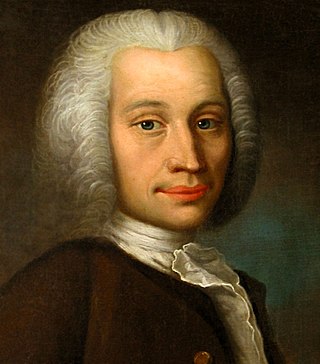 4
Anders Celsius was a Swedish astronomer, physicist and mathematician. He was professor of astronomy at Uppsala University from 1730 to 1744, but traveled from 1732 to 1735 visiting notable...
4
Anders Celsius was a Swedish astronomer, physicist and mathematician. He was professor of astronomy at Uppsala University from 1730 to 1744, but traveled from 1732 to 1735 visiting notable...
John Ericsson
 4
John Ericsson was a Swedish-American inventor. He was active in England and the United States.
4
John Ericsson was a Swedish-American inventor. He was active in England and the United States.
Gustaf VI Adolf
 4
Gustaf VI Adolf was King of Sweden from 29 October 1950 until his death in 1973. He was the eldest son of Gustaf V and his wife, Victoria of Baden. Before Gustaf Adolf ascended the throne, he had...
4
Gustaf VI Adolf was King of Sweden from 29 October 1950 until his death in 1973. He was the eldest son of Gustaf V and his wife, Victoria of Baden. Before Gustaf Adolf ascended the throne, he had...
Alfred Nobel
 4
Alfred Bernhard Nobel was a Swedish chemist, inventor, engineer and businessman. He is known for inventing dynamite as well as having bequeathed his fortune to establish the Nobel Prize. He also made...
4
Alfred Bernhard Nobel was a Swedish chemist, inventor, engineer and businessman. He is known for inventing dynamite as well as having bequeathed his fortune to establish the Nobel Prize. He also made...
Birger Jarl
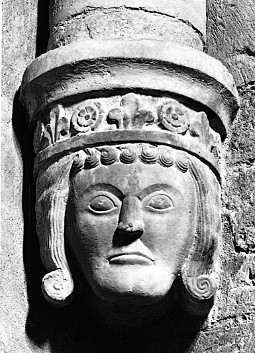 3
Birger Jarl, also known as Birger Magnusson, was a Swedish statesman and regent, jarl, and a member of the House of Bjelbo, who played a pivotal role in the consolidation of Sweden. His first...
3
Birger Jarl, also known as Birger Magnusson, was a Swedish statesman and regent, jarl, and a member of the House of Bjelbo, who played a pivotal role in the consolidation of Sweden. His first...
Albert Engström
 3
Albert Engström (1869–1940) was a Swedish artist, author and member of the Swedish Academy from 1922.
3
Albert Engström (1869–1940) was a Swedish artist, author and member of the Swedish Academy from 1922.
Eric IX of Sweden
 3
Eric IX, also called Eric the Holy, Saint Eric, and Eric the Lawgiver, was a Swedish king in the 12th century, c. 1156–1160. The Roman Martyrology of the Catholic Church names him as a saint...
3
Eric IX, also called Eric the Holy, Saint Eric, and Eric the Lawgiver, was a Swedish king in the 12th century, c. 1156–1160. The Roman Martyrology of the Catholic Church names him as a saint...
Christina Nilsson
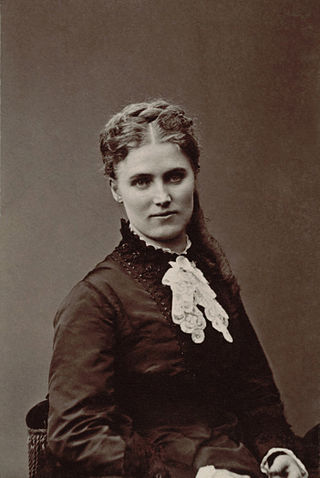 3
Christina Nilsson, Countess de Casa Miranda, also called Christine Nilsson was a Swedish operatic dramatic coloratura soprano. Possessed of a pure and brilliant voice (B3-F6), first three then two...
3
Christina Nilsson, Countess de Casa Miranda, also called Christine Nilsson was a Swedish operatic dramatic coloratura soprano. Possessed of a pure and brilliant voice (B3-F6), first three then two...
Olaus Magnus
 3
Olaus Magnus was a Swedish writer, cartographer, and Catholic clergyman.
3
Olaus Magnus was a Swedish writer, cartographer, and Catholic clergyman.
Viktor Rydberg
 3
Abraham Viktor Rydberg was a Swedish writer and a member of the Swedish Academy, 1877–1895. "Primarily a classical idealist", Viktor Rydberg has been described as "Sweden's last Romantic" and by 1859...
3
Abraham Viktor Rydberg was a Swedish writer and a member of the Swedish Academy, 1877–1895. "Primarily a classical idealist", Viktor Rydberg has been described as "Sweden's last Romantic" and by 1859...
Olof Palme
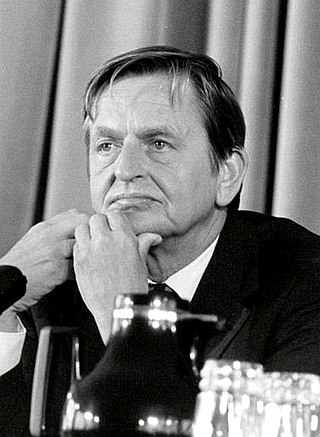 3
Sven Olof Joachim Palme was a Swedish politician and statesman who served as Prime Minister of Sweden from 1969 to 1976 and 1982 to 1986. Palme led the Swedish Social Democratic Party from 1969 until...
3
Sven Olof Joachim Palme was a Swedish politician and statesman who served as Prime Minister of Sweden from 1969 to 1976 and 1982 to 1986. Palme led the Swedish Social Democratic Party from 1969 until...
August Strindberg
 3
Johan August Strindberg was a Swedish playwright, novelist, poet, essayist, and painter. A prolific writer who often drew directly on his personal experience, Strindberg wrote more than 60 plays and...
3
Johan August Strindberg was a Swedish playwright, novelist, poet, essayist, and painter. A prolific writer who often drew directly on his personal experience, Strindberg wrote more than 60 plays and...
Sigfrid of Sweden
 3
Saint Sigfrid of Sweden
(Swedish: Sigfrid, Latin: Sigafridus, Old Norse: Sigurðr, Old English: Sigefrið/Sigeferð) was a missionary-bishop in Scandinavia during the first half of the 11th century....
3
Saint Sigfrid of Sweden
(Swedish: Sigfrid, Latin: Sigafridus, Old Norse: Sigurðr, Old English: Sigefrið/Sigeferð) was a missionary-bishop in Scandinavia during the first half of the 11th century....
Charles IX of Sweden
 3
Charles IX, also Carl, reigned as King of Sweden from 1604 until his death. He was the youngest son of King Gustav I and of his second wife, Margaret Leijonhufvud, the brother of King Eric XIV and of...
3
Charles IX, also Carl, reigned as King of Sweden from 1604 until his death. He was the youngest son of King Gustav I and of his second wife, Margaret Leijonhufvud, the brother of King Eric XIV and of...
Immanuel Kant
 3
Immanuel Kant was a German philosopher and one of the central Enlightenment thinkers. Born in Königsberg, Kant's comprehensive and systematic works in epistemology, metaphysics, ethics, and...
3
Immanuel Kant was a German philosopher and one of the central Enlightenment thinkers. Born in Königsberg, Kant's comprehensive and systematic works in epistemology, metaphysics, ethics, and...
Hubertus
 3
Hubertus or Hubert was a Christian saint who became the first bishop of Liège in 708 A.D. He is the patron saint of hunters, mathematicians, opticians and metalworkers. Known as the "Apostle of the...
3
Hubertus or Hubert was a Christian saint who became the first bishop of Liège in 708 A.D. He is the patron saint of hunters, mathematicians, opticians and metalworkers. Known as the "Apostle of the...
Fredrika Bremer
 3
Fredrika Bremer was a Finnish-born Swedish writer and reformer. Her Sketches of Everyday Life were wildly popular in Britain and the United States during the 1840s and 1850s and she is regarded as...
3
Fredrika Bremer was a Finnish-born Swedish writer and reformer. Her Sketches of Everyday Life were wildly popular in Britain and the United States during the 1840s and 1850s and she is regarded as...
Olof Skötkonung
 3
Olof Skötkonung, sometimes stylized as Olaf the Swede, was King of Sweden, son of Eric the Victorious and, according to Icelandic sources, Sigrid the Haughty. He succeeded his father in c. 995. He...
3
Olof Skötkonung, sometimes stylized as Olaf the Swede, was King of Sweden, son of Eric the Victorious and, according to Icelandic sources, Sigrid the Haughty. He succeeded his father in c. 995. He...
Pehr Hörberg
 3
Pehr Hörberg was a Swedish artist, painter and musician. In 1769 he married the maid Maria Eriksdotter and they had three sons.
3
Pehr Hörberg was a Swedish artist, painter and musician. In 1769 he married the maid Maria Eriksdotter and they had three sons.